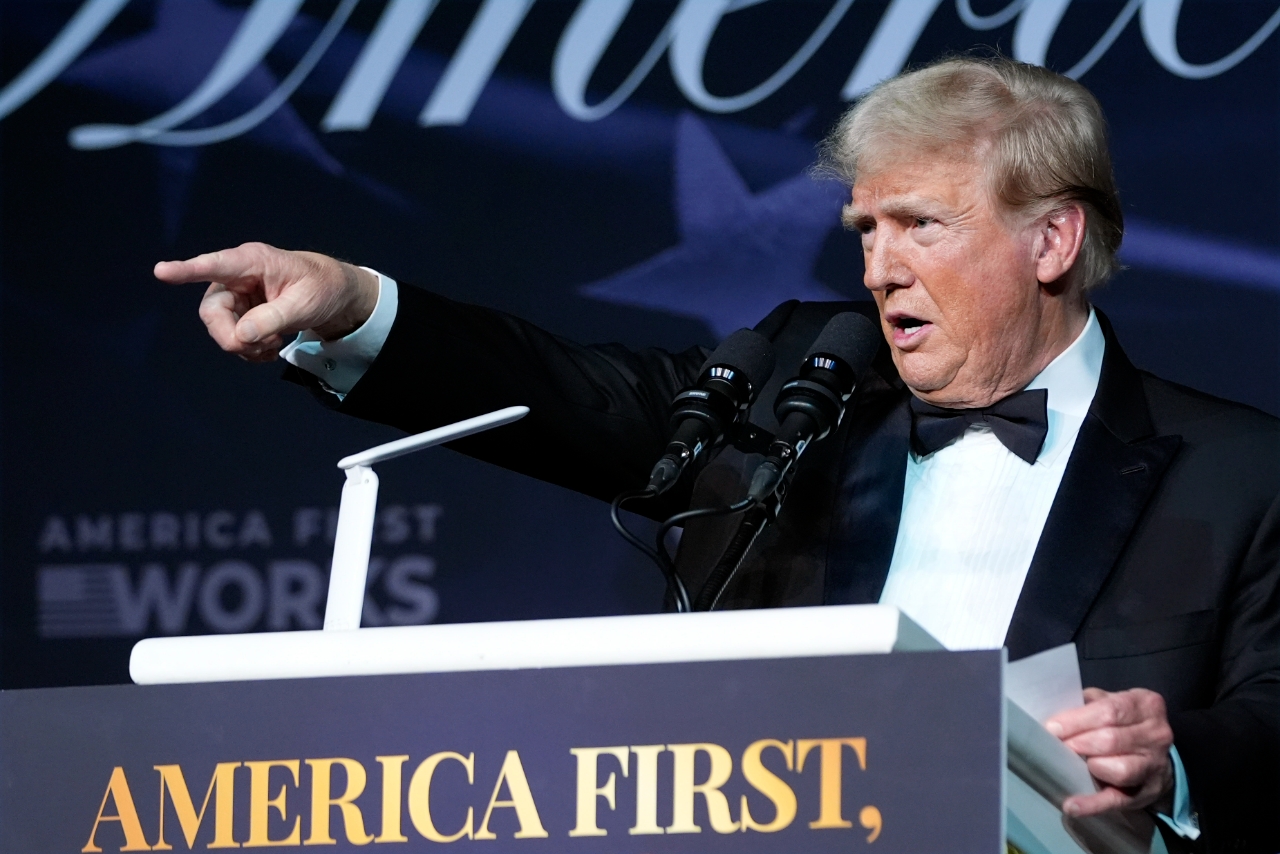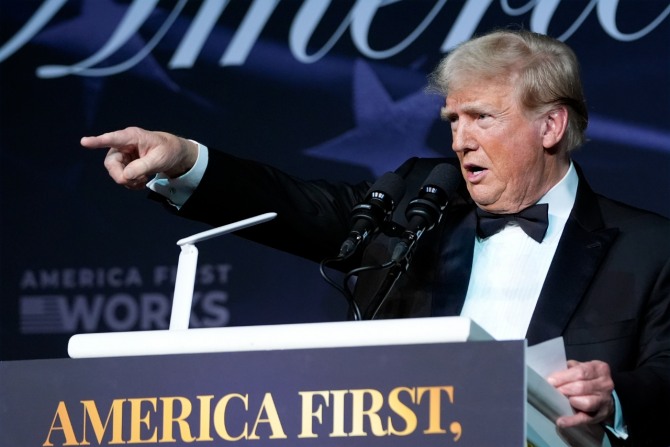Table of Contents

Trump’s trade war changes the global economic landscape… China’s response is a variable
View larger image U.S. President-elect Donald Trump is expected to bring a huge typhoon to the global economy. US President-elect Donald Trump. Photo = Newsis President-elect Donald Trump is expected to bring a huge typhoon to the world economy.
As a presidential election pledge, President-elect Trump promised to impose a 10-20% tariff on all products imported into the United States and a minimum 60% tariff on China, which was betrayed during his first term in office.
It is an established theory in economics that tariffs are basically a factor that increases inflation, and both the country that imposes tariffs and the country that exports suffer losses.
However, even if there are actual losses due to the complex political landscape and the rise of hardliners, it is very likely that Trump will push forward as he did during his first term in office.
Meanwhile, analysts say that the key to determining what impact Trump’s massive tariff policy, mainly targeting China, will have on the global economy is how China responds.
focus is china
It is unlikely that Trump’s pledge to impose tariffs of 10-20% on all imports and at least 60% on Chinese imports will end up as just a blank check.
According to Barron’s, experts predict that Trump will immediately impose retaliatory tariffs on China as soon as he takes office on January 20th (local time) next year.
He said he agreed to a phase 1 trade agreement with China during his first term in office, but is retaliating for China’s failure to keep it.
China promised to purchase an additional $200 billion worth of American products in the face of Trump’s large-scale tariffs, but did not keep its promise when Trump lost the 2020 presidential election and the Joe Biden administration came into power.
It is expected that Trump will likely decide to impose a 50% tariff on Chinese products through a presidential executive order on his first day in office, citing violations of trade agreements.
A 50% tariff will be imposed within a few months, and the United States is expected to begin trade negotiations with China in an advantageous environment.
In particular, the person who will lead the trade negotiations with China is former U.S. Trade Representative (USTR) Robert Lighthizer, an ultra-hardliner who drafted Trump’s protectionist policy.
Trump has already selected Lighthizer as USTER representative.
China’s response
How China responds to the United States’ high-intensity retaliatory tariffs is expected to determine the overall future trade policy of the United States and the resulting impact on the global economy.
The least impact scenario is that China enters into negotiations with the United States. The feasibility is high.
Since China’s economic growth rate has already left a high level that would not cause dissatisfaction among Chinese workers, there is a possibility that the Chinese leadership will seek compromise.
This is a way to appease the United States by promising to import more American products, mainly agricultural products, and to expand corporate investment in the United States.
Even if this happens, economic shock is inevitable.
However, if China accepts Trump’s high-intensity tariff policy as ‘killing China’ and declares a trade war, the intensity of the shock will be much greater.
A trade war could begin as China also imposes large tariffs on U.S. agricultural products.
The International Monetary Fund (IMF) has warned that a tariff war that does not escalate into a trade war alone could reduce global gross domestic product (GDP) by 0.5% in 2020.
currency war
If China decides to respond to the United States, the world may descend into a trade war and a currency war at the same time.
This is because China, whose exports to the U.S. have become difficult due to the U.S. tariffs on China, may artificially devalue the yuan to secure price competitiveness as it diverts its exports to other countries.
If China lowers the value of the yuan by 3-5%, it will not lead to a currency war, but if the devaluation expands to 10-15%, serial devaluation is inevitable for countries that must compete with China in the export market.
Eswar Prasad, a professor at Cornell University and former director of the IMF’s China Department, pointed out that a 10-15% devaluation is a level at which China must also bear a significant risk.
This is because a large-scale devaluation of the yuan could not only significantly raise Chinese inflation but also trigger capital outflow and financial instability.
In this case, the United States may deprive China of its free market economic status.
The United States granted normal trading status to China in 2000, and using this as a stepping stone, China joined the World Trade Organization (WTO) and was incorporated into the global economy.
But hard-liner USTR President-designate Lighthizer has argued for years that China should be stripped of this status.
If this status is revoked, China will be treated like North Korea or Russia in trade with the United States. In fact, export routes are blocked.
“This is a situation that has gone as far as it can go,” said Henrietta Treys, managing director at Beta Partners. “It will probably be a permanent measure, and it will change the landscape of U.S. trade very dramatically.” Trades estimates that there is a 40% chance that a bill revoking China’s status as a normal trading country will pass Congress.
I have to open the lid to find out
Trump’s radical tariff policy will likely be implemented in stages rather than all at once. It is expected to first address China and then gradually expand to U.S. trading partners, including allies.
This is because the United States must also check the inflationary pressure and impact caused by tariffs.
It is difficult to predict to what extent Trump’s proposed tariff policy will actually be implemented, but given that he demonstrated bold implementation capabilities during his first term in office, the possibility of implementing a radical tariff policy cannot be completely ruled out.
Ian Shepherdson, chief economist at Pantheon Macro, said now is the time to wait and see. “There could be a huge policy change, or it could just be a bluff,” he said.
Kim Mi-hye, Global Economics Overseas Correspondent [email protected]
[알림] This article is for reference only when making investment decisions, and we are not responsible for any investment losses based on it.

How might other countries react to Trump’s trade policies, and what alliances or conflicts could emerge as a result of these reactions?


Trump’s trade war changes the global economic landscape… China’s response is a variable
1. As President-elect Donald Trump has proposed increasing tariffs on imports into the US, how does this impact the global economy? Could you explain the potential consequences in detail?
2. Given Trump’s past policies and statements, it is likely he will push forward with his proposed tariffs despite the predicted losses for both importing and exporting countries. How does the complex political landscape influence his decision to impose these tariffs?
3. You mentioned that China’s response to the proposed tariffs will be a key factor in determining their impact on the global economy. Could you discuss the different scenarios and possible outcomes of China’s reaction?
4. What is the likelihood of a currency war breaking out between the US and China, and what would be the consequences of such an event?
5. If China retaliates with devaluing its currency, how might this affect global financial stability and trade relations?
6. How do you anticipate the implementation of Trump’s proposed tariffs will unfold? Will it be a gradual process or immediate approach, and what factors might influence this decision?
7. Do you believe the proposed tariffs could have a significant long-term impact on global trade and economic relations? If so, how?
![[공식발표]‘SSG foreign pitcher lineup is complete’ recruiting big leaguer → Anderson 1.2 million won… [공식발표]‘SSG foreign pitcher lineup is complete’ recruiting big leaguer → Anderson 1.2 million won…](https://sports.chosun.com/news/html/2024/11/17/2024111701001111900173312.jpg)
